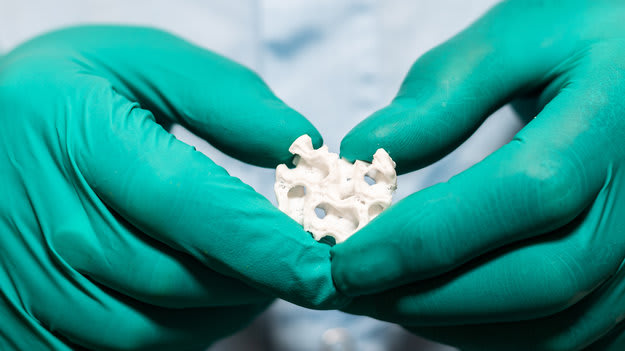A journey to Mars will take several years, and humans won’t be able to turn back if an astronaut suffers a burn or a bone fracture. Which is why scientists at the University Hospital of Dresden Technical University have now produced the first bioprinted skin and bone samples for use in space. Even though treating patients with 3D-printed skin or bones is still in its early stages back on Earth, the technique is particularly vital in space, where the human body doesn’t heal as quickly.
"In the case of burns, for instance, brand new skin could be bioprinted instead of being grafted from elsewhere on the astronaut’s body, doing secondary damage that may not heal easily in the orbital environment," said Tommaso Ghidini, head of the division at the European Space Agency that oversees the project, in a statement.
Scientists were faced with the unique challenges of creating a technique that would still work in zero gravity. So, the team invented a method of 3D printing that would work while upside down. They thickened human blood plasma, which is used to bioprint skin cells, with plant material so it could work in altered gravity. To 3D print bones, they added calcium phosphate bone cement to printed human stem cells. The calcium phosphate works as a structure-supporting material, and is absorbed by the body as the bone grows.
The samples are just the first steps in a long journey to make this type of 3D printing ready for space. A self-contained spacecraft can only hold so much. The project is looking into what kind of onboard facilities would be needed, such as surgical rooms and equipment, for astronauts to perform the 3D bioprinting on their own. For a look at how the team at ESA were able to create the bioprinted skin and bone, take a look at the videos below.
Source: ESA
from Engadget https://engt.co/2xCzGmW
via IFTTT
